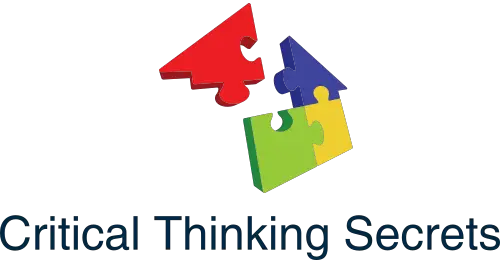Critical thinking is essential in today’s world. It enables individuals to make informed decisions and solve complex problems effectively.
By examining issues through different lenses, thinkers can uncover new insights and approaches.
This article explores three distinct lenses that enhance critical thinking. These lenses allow individuals to view challenges with fresh perspectives and a clearer understanding.

Each lens offers a unique angle for analysis, promoting deeper evaluation of information and better problem-solving skills. Readers will discover how to shift their viewpoints, consider various contexts, and adapt their thinking to fit specific situations. This process not only aids in constructing sound arguments but also sharpens strategic thinking.
Approaching issues through these lenses can transform how one interprets information and influences decision-making. This makes this knowledge valuable for both personal and professional growth.
Key Takeaways
- Different lenses provide unique perspectives for critical thinking.
- Effective problem statements lead to better solutions.
- Adaptable thinking strategies improve decision-making skills.
The Essence of Critical Thinking
Critical thinking is a vital skill that involves analyzing information, making informed evaluations, and drawing sound inferences. This section explores the definitions and essential skills that underpin effective critical thinking.
Defining Critical Thinking
Critical thinking involves reasonable and reflective thinking focused on deciding what to believe or do. It encompasses evaluating information and assessing reasoning behind beliefs and judgments. Leveling up from mere intuition, it relies on logic and a structured approach.
Researchers agree that critical thinking goes beyond accumulating facts. It requires a process of questioning, clarifying, and analyzing arguments.
For instance, it can involve recognizing biases in one’s thinking and understanding how they affect conclusions. Critical thinkers consistently apply skills that lead to fair and justified beliefs, minimizing the influence of emotion.
Essential Critical Thinking Skills
Essential skills for critical thinking include analysis, evaluation, and inference.
- Analysis involves breaking down complex information into manageable parts. This can mean examining data, arguments, and various perspectives to understand them better.
- Evaluation requires assessing the credibility of sources and the strengths and weaknesses of arguments. This skill helps in distinguishing between strong evidence and misleading claims.
- Inference is the ability to draw conclusions based on the available information. It helps in forming judgments that are well-reasoned and justifiable.
By developing these skills, individuals can approach problems systematically and make informed decisions. Each skill interconnects, enhancing the effectiveness of critical thinking as a whole.
Frameworks of Analysis
Effective analysis requires a structured approach to uncover the most critical elements influencing outcomes. Two notable frameworks are the 80/20 Rule and Vilfredo Pareto’s principles. These frameworks help identify key factors that contribute to problems and solutions within a given context.
Understanding the 80/20 Rule
The 80/20 Rule, also known as Pareto’s Principle, states that roughly 80% of effects come from 20% of causes. This concept applies across various fields, including business, health, and project management.
For example, in sales, 80% of revenue may come from just 20% of customers.
Understanding this rule allows individuals to target their efforts effectively. By focusing on the most impactful elements, they can address the root causes of problems efficiently.
Identifying these critical areas can lead to significant improvements in productivity and resource allocation.
Applying Vilfredo Pareto’s Principles
Vilfredo Pareto was an Italian economist whose insights laid the groundwork for the 80/20 Rule. His analysis of wealth distribution revealed that a small percentage of the population owned most of the wealth. This finding extends beyond economics into various domains, encouraging a focus on the most significant elements in any situation.
In practice, applying Pareto’s Principles involves mapping out the problem space. This helps to identify which factors yield the most considerable results.
For instance, in project management, focusing on the tasks that will deliver maximum value can streamline efforts.
By utilizing these frameworks, individuals can create effective strategies that prioritize the most impactful efforts, driving better outcomes.
Diverse Lenses of Interpretation
Using different lenses for analysis can reveal unique insights. Each lens offers a distinct point of view, shaping the interpretation of reality. Context plays a critical role in how these lenses function. Understanding both the role of context and the comparisons of different lenses leads to richer conclusions.
Role of Context in Analysis
Context provides the background that influences interpretation. When analyzing a situation, it is essential to consider the surrounding factors, including historical, cultural, and social elements.
For example, a decision made in a corporate setting may have different implications than the same decision made in a community organization.
Different contexts shape outcomes. An individual’s background will affect their point of view, impacting how they understand information. Recognizing context allows for a more nuanced analysis and highlights potential biases.
In critical thinking, acknowledging context not only aids in interpretation but also in problem-solving. This approach encourages deeper engagement with the subject matter, ultimately leading to more informed and balanced conclusions.
Comparing Different Lenses
Different lenses can lead to diverse interpretations and solutions. Each lens focuses on unique aspects of a situation, revealing various possibilities that may not be visible through a single perspective.
For instance, a “natural lens” emphasizes facts and figures, while a “borrowed lens” draws on external ideas and experiences. This variety enriches analysis. Comparing these lenses helps to highlight strengths and weaknesses in understanding.
Using multiple lenses encourages critical thinking. It prompts individuals to challenge assumptions and consider other viewpoints.
By embracing diverse interpretations, one can craft a well-rounded and informed response to complex problems.
Recognizing the distinct qualities of each lens fosters a more adaptive approach to critical thinking.
Critical Evaluation of Information
Evaluating information critically is essential for sound decision-making. It involves assessing the evidence presented, verifying its reliability, and ensuring the relevance and expertise of the sources used.
Assessing Evidence and Reliability
When assessing evidence, it is important to consider the quality and credibility of the information. Reliable evidence supports claims and helps to establish trustworthiness.
Look for data from reputable studies or recognized experts in the field.
To assess reliability, consider factors such as the methodology used in studies, the sample size, and the publication source.
Peer-reviewed journals and academic publications usually provide more reliable information. Moreover, questioning the motives of the source can reveal biases.
Evaluating Relevance and Expertise
Relevance is crucial in critical evaluation. Information must relate directly to the topic at hand. If a source does not clearly connect to the issue being discussed, its value diminishes.
Next, consider the expertise of the authors. Specialists with advanced education or extensive experience in a given field tend to provide more accurate insights.
Evaluate their credentials by checking their educational background and publication history. This approach ensures that the information comes from a knowledgeable perspective, further strengthening its usefulness.
Developing Effective Problem Statements
Creating clear and focused problem statements is essential for effective problem-solving. This process involves identifying specific problems and objectives while understanding the underlying causes and relationships at play.
Identifying Problem Statements and Objectives
A well-defined problem statement outlines the existing issue that needs addressing. It should be specific, measurable, and practical.
For example, instead of stating, “Sales are low,” a more effective problem statement might say, “Sales decreased by 20% in Q2 compared to Q1.”
Objectives should connect to the problem statements. These objectives help clarify what success looks like.
They should answer questions like “What is the goal?” and “What actions need to be taken?” A clear objective helps guide the process and keeps the focus on finding solutions.
Determining Root Causes and Relationships
Identifying root causes is crucial for understanding the problem deeply. It involves asking “Why?” multiple times to uncover the primary factors contributing to the issue.
This can be achieved using techniques like the 5 Whys or fishbone diagrams.
Understanding relationships between different elements of a problem is equally important. It helps reveal how various factors interact with each other, which may impact the problem’s scope.
By recognizing these relationships, it is easier to create solutions that address multiple aspects of an issue rather than just the symptoms.
Constructing Sound Arguments
Constructing sound arguments involves a careful examination of assumptions and the proper use of recommendations. This section covers how to formulate reliable arguments and influence others effectively.
Formulating Arguments Based on Assumptions
Assumptions are the underlying beliefs or ideas accepted without proof. They shape the foundation of an argument.
Identifying these assumptions is crucial for developing a sound argument.
To formulate an argument, one must first recognize their mindset. This mindset influences how assumptions are formed.
A clear acknowledgment of one’s assumptions helps ensure an argument is logical and valid.
When presenting an argument, it is essential to validate the assumptions.
This can be achieved by gathering evidence and data that support them.
A well-structured argument should explain how these assumptions lead to its conclusion, making the reasoning transparent and compelling.
Influencing with Recommendations
Recommendations provide guidance on actions based on the argument presented. They should stem directly from the conclusions drawn from a sound argument.
An effective recommendation goes beyond stating what to do; it should also explain why it is necessary.
To influence effectively, recommendations must be realistic and consider potential objections.
Acknowledging possible pushback strengthens the argument. Presenting counterarguments shows awareness and enhances credibility.
Additionally, framing the recommendation in a clear and actionable way makes it easier for others to understand.
Using concise language along with supportive evidence greatly aids persuasion. This clarity helps ensure the recommendation is not only heard but also acted upon.
Strategic Thinking in Practice
Strategic thinking involves carefully evaluating recommendations and their potential effects. This includes understanding relevant groups and establishing clear criteria for success. The following sections explore how to consider consequences and adjacent groups, along with effective ways to set success criteria.
Considering Consequences and Adjacent Groups
When making strategic decisions, it is important to analyze the consequences of recommendations. This means looking beyond immediate effects to understand long-term impacts.
Each decision can influence various stakeholders – often referred to as adjacent groups.
Adjacent groups may include customers, partners, and community members. Understanding their perspectives helps identify potential risks and benefits.
For instance, a new product launch may please customers but disrupt a partner’s supply chain.
By mapping out these relationships, one can foresee challenges and improve outcomes.
It is essential to ask: “Who else is affected, and how?” This practice leads to more informed decision-making and enhances overall effectiveness.
Setting Success Criteria and ‘7 So What’s’
Defining success criteria is vital for measuring the effectiveness of strategic initiatives. Clarity in what constitutes success allows teams to assess progress.
The ‘7 So What’s’ framework is a useful tool in this respect. This method encourages critical questioning to ensure that each criterion is meaningful.
For example, a team can ask questions like:
- So what if we achieve this goal?
- So what impact will this have on our stakeholders?
- So what are the potential downsides?
By continuously asking these questions, teams can refine their objectives to align with broader organizational goals.
This thorough analysis ensures that success criteria are not just numbers but also reflect desirable outcomes that matter to the organization and its stakeholders.
Frequently Asked Questions
This section addresses key aspects of critical thinking. It explores elements that define critical thought, methods for exploring problems, and models that aid in developing relevant skills.
What are the three major elements that constitute critical thinking?
The three major elements include analysis, evaluation, and inference. Analysis involves breaking down information into parts for better understanding. Evaluation assesses the credibility and significance of information. Inference draws logical conclusions based on analyzed data.
How can focusing questions help in exploring a problem space more effectively?
Focusing questions narrow down the scope of inquiry. They help identify key aspects of a problem and guide the analysis.
By concentrating on specific elements, individuals can uncover deeper insights and develop more effective solutions.
In what ways can comparing solutions from different viewpoints enhance analytical skills?
Comparing solutions from various perspectives promotes diverse thinking. It encourages individuals to consider alternative solutions and recognize biases in their reasoning.
This practice fosters adaptable and well-rounded analytical skills.
How can a problem statement clarify the main objectives of critical analysis?
A clear problem statement defines the core issue at hand. It outlines the specific objectives to be addressed during analysis. This clarity helps direct the critical thinking process and ensures that efforts remain focused on relevant questions.
What strategies could be employed to enhance a team’s critical thinking abilities?
Teams can enhance critical thinking by fostering open communication and encouraging diverse opinions. Regular brainstorming sessions contribute to idea generation. Additionally, structured feedback helps refine thoughts and improve the decision-making process.
Could you name three models that are instrumental in developing critical thinking skills?
Three effective models include the Paul-Elder Model, the Socratic Method, and the Bloom’s Taxonomy. The Paul-Elder Model focuses on elements and standards of reasoning. The Socratic Method encourages questioning and dialogue. Bloom’s Taxonomy provides a framework for developing cognitive skills at various levels.





